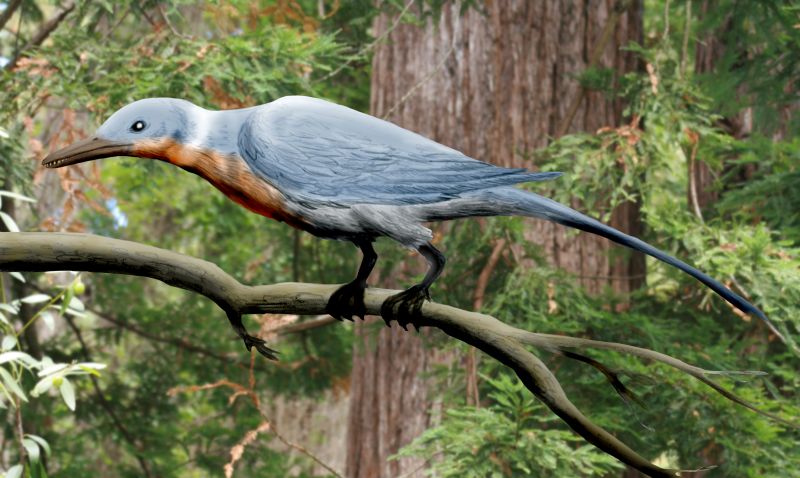I've being reading in the New Scientist about the (rather romantically named) Opposite Birds. These evolved from dinosaurs at about the same time as the ancestors of modern birds and coexisted with them for millions of years. They had feathers and must have been good fliers.
Then came the mass extinction of 65 mya. Of all the dinosaurs only modern birds survived. You might have thought that being so similar the Opposite Birds would have lived on too. Mysteriously they didn't and it's quite hard to understand why.
Here's a rather nice reconstruction of an opposite bird. If you look closely you'll see it has teeth.

https://commons.wikimedia.org/wiki/File:Shanweiniao_cooperorum.jpg
Comments
New comment
"Then came the mass extinction of 65 mya. Of all the dinosaurs only modern birds survived. You might have thought that being so similar the Opposite Birds would have lived on too. Mysteriously they didn't and it's quite hard to understand why."
Modern birds are warm-blooded. Were they warm-blooded back then and were the Opposite Birds warm-blooded? If there was an extended winter from dust in the atmosphere, that might have made a difference.
Birds have a lung system different from us that makes them very efficient at absorbing oxygen (and pollutants). Did Opposite Birds have the same efficient lung system (I doubt such soft tissue could be identified in fossils to be tell)? Might having more efficient oxygen absorbing ability have helped them in an oxygen-poor atmosphere. For example, might much of the planet have been covered in smoke, meaning small furry things living near the ground were OK, huge dinosaurs had their heads in the smoke, turtles and crocodilians survived because their breathing apparatus is near ground level and the Opposite Birds were flying in air too poor in oxygen for them to live in? Hmm. I like this theory: a not-terribly-toxic but oxygen-poor smoke-like substance filling the atmosphere except just above ground level. I'm not sure I should post this publicly before doings some more research on it myself...
New comment
I think that all dinosaurs may have been warmblooded.The breathing apparatus is one I hadn't considered. In the New Scientist piece fostering was also considered. It seems there are some fossils suggesting Other Bird chicks were independent, no gaping baby mouth for the parents to feed.
My undone research though, suggested by my garden thrush each morning, is could Opposite Birds sing? If not perhaps the explanation is that in obscured skies songsters could find a mate by sound, in a similar way to present-day warblers.
But this is a weak theory I'd say. The ancestors of the avian dinosaurs we see today are thought to have lived on water margins. Not in forests, like opposite birds did. So song recognition as a mating mechanism doesn't seem convincing in this case.